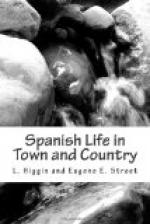A great deal has been said about the depreciation of the value of the peseta (franc) since the outbreak of the war with America, but this unsatisfactory state of affairs is gradually mending; and the attention of the Government is thoroughly awakened to it. The law of May 17, 1898, and the Royal decree of August 9 provide that if the notes in circulation of the Bank of Spain exceed fifteen hundred millions, gold must be guaranteed to the half of the excess of circulation between fifteen hundred and two thousand, not the half of all the notes in circulation. The metal guarantee, silver and gold, must cover half of the note circulation, when the latter is between fifteen hundred and two thousand millions, and two-thirds when the circulation exceeds two thousand. But the Bank has not kept this precept, and there has, in fact, been an illegal issue of notes to the value of 6,752,813 pesetas. So states the Boletin de la Camara de Comercio de Espana en la Gran Bretana of April 15, 1901.
The Boletin, after giving an account of the English custom of using cheques against banking accounts, instead of dealing in metal or paper currency only, as in Spain, strongly advocates the establishment of the English method. It is only in quite recent years that there has been any paper currency at all in Spain; the very notes of the Bank of Spain were not current outside the walls of Madrid, and had only a limited currency within.




